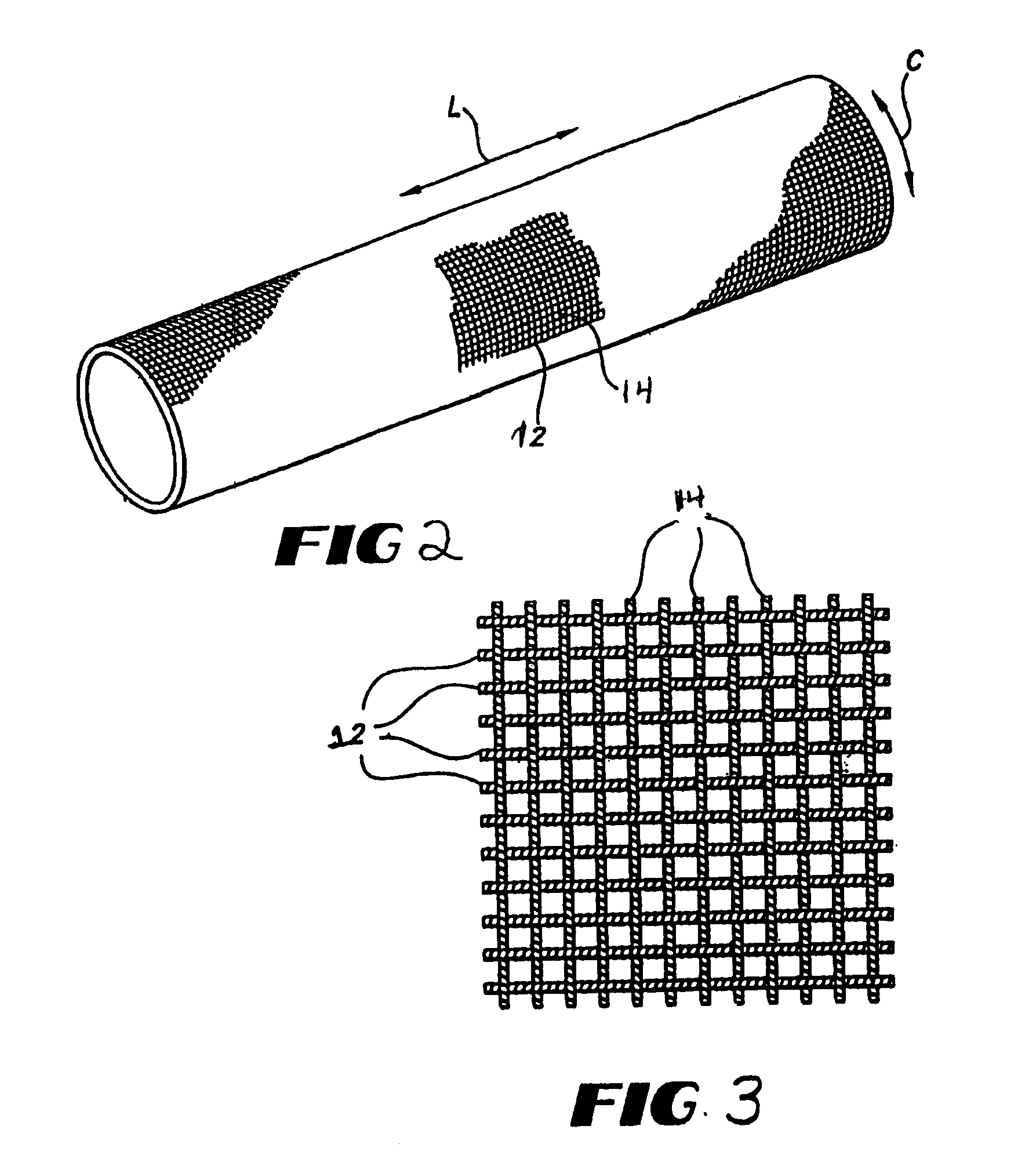Blood-tight implantable textile material and method of making
a textile material and textile technology, applied in the field of implantable medical prostheses, can solve the problems of increased manufacturing time and expense, high cross-linked tendon derived collagen, and inability to meet the requirements of textile grafts, and achieve the effect of easy saturation or impregnation
- Summary
- Abstract
- Description
- Claims
- Application Information
AI Technical Summary
Benefits of technology
Problems solved by technology
Method used
Image
Examples
Embodiment Construction
[0027]While this invention may be satisfied by embodiments in many different forms, there will be described herein in detail preferred embodiments of the invention, with the understanding that the present disclosure is to be considered as exemplary of the principles of the invention and is not intended to limit the invention to the embodiments illustrated and described.
[0028]The present invention relates to blood-tight textile implantable materials and the simplified process of making the same. In particular, the blood-tight textile implantable material of the present invention may be an unmodified textile material having a porous structure. A biocompatible non-colloidal mixture is saturated within the porous structure of the textile material to make it substantially non-porous and blood-tight. The biocompatible mixture comprises a polysaccharide, an alcohol, and water. Preferably the alcohol is ethanol. The biocompatible mixture forms a slurry which is easily saturated or impregnat...
PUM
| Property | Measurement | Unit |
|---|---|---|
| structure | aaaaa | aaaaa |
| bioresorbable | aaaaa | aaaaa |
| non-resorbable | aaaaa | aaaaa |
Abstract
Description
Claims
Application Information
 Login to View More
Login to View More - R&D
- Intellectual Property
- Life Sciences
- Materials
- Tech Scout
- Unparalleled Data Quality
- Higher Quality Content
- 60% Fewer Hallucinations
Browse by: Latest US Patents, China's latest patents, Technical Efficacy Thesaurus, Application Domain, Technology Topic, Popular Technical Reports.
© 2025 PatSnap. All rights reserved.Legal|Privacy policy|Modern Slavery Act Transparency Statement|Sitemap|About US| Contact US: help@patsnap.com



